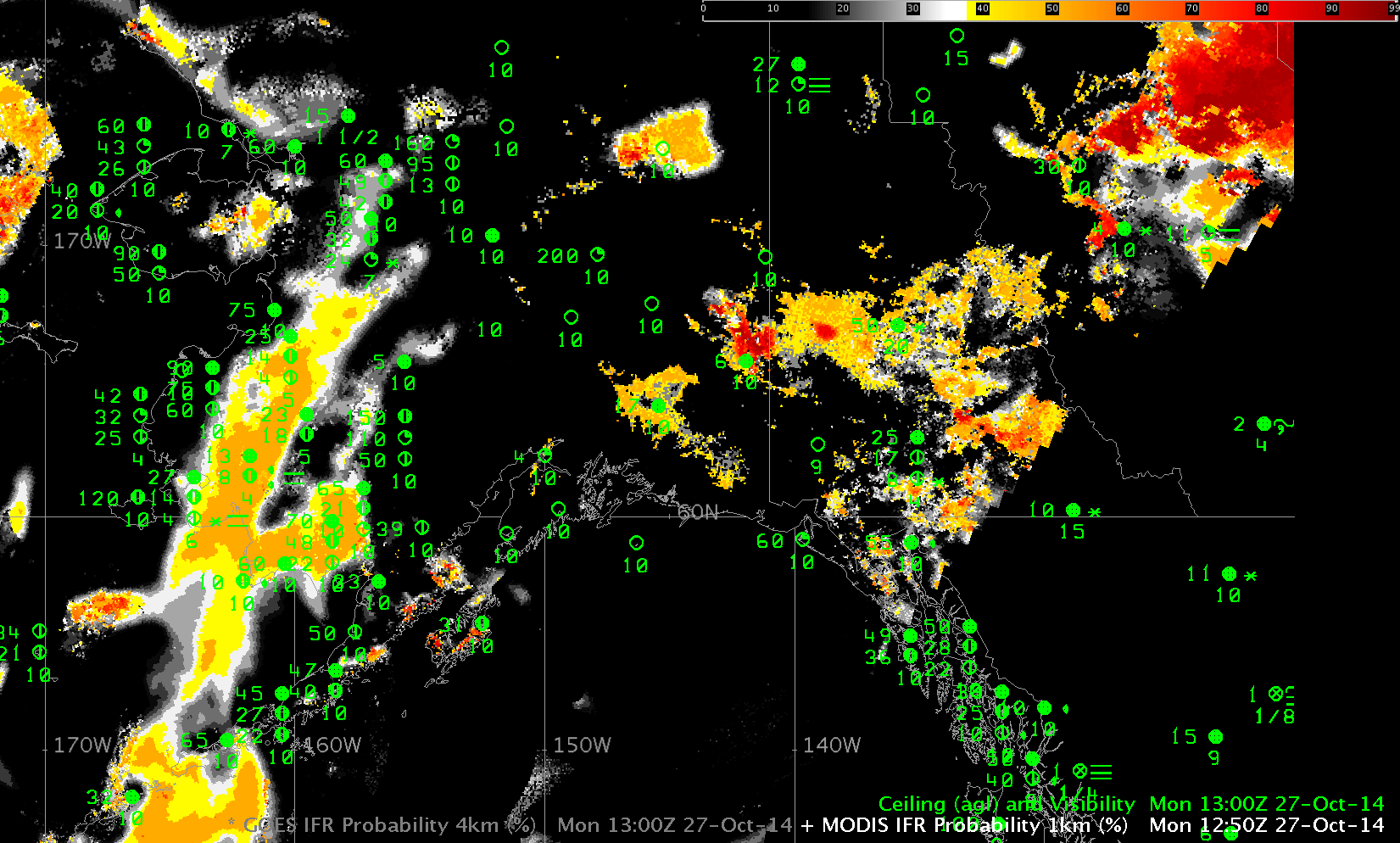
GOES-R IFR Probabilities computed using GOES-15 and Aqua Data, both near 1300 UTC on 27 October 2014 (Click to enlarge)
GOES-R IFR Probabilities are created using both GOES-15 Imager and Terra/Aqua MODIS. The toggle above shows MODIS-based IFR Probabilities (computed using data from Aqua and the Rapid Refresh) and GOES-based IFR Probabilities (computed using data from GOES-15 and the Rapid Refresh). There are three regions in the fields that warrant comment.
(1) Over East-central Alaska and the Yukon, large values of MODIS-based IFR Probabilities are limited in area (and near stations — such as Northway Airport — that are reporting IFR or near-IFR conditions). GOES-based IFR Probabilities in that same region include a large area with modest values — around 50%. Limb brightening may have an effect at high latitudes on the brightness temperature difference fields that are used in the computation of IFR probabilities because limb brightening is a function of wavelength. MODIS data (which will have far less limb brightening) can be used as a good check on the IFR Probabilty fields computed from GOES.
(2) Over Southwestern Alaska, and into the eastern Aleutians, GOES-based and MODIS-based IFR Probabilities are very similar. In this region, multiple cloud layers prevent satellite data from being used as a predictor in the computation of GOES-R IFR Probabilities. Rapid Refresh data is the main predictor for low clouds/fog, so MODIS-based and GOES-based fields will look similar.
(3) In the northeastern part of the domain, over the Northwest Territories of Canada, MODIS-based and GOES-based IFR Probabilities are very high. Satellite data are being used as a predictor here, and the satellite-based signal is strong enough to overwhelm any limb-brightening. (Note that southern Northwest Territories and northern British Columbia are south of the MODIS scan).
Terra- and Aqua-based MODIS observations yield frequent observations that result in good spatial and temporal coverage for IFR Probability fields over Alaska. GOES-15 temporal coverage is better, but the frequent MODIS passes can be used to benchmark GOES-based IFR Probability fields that may be misrepresentative because of limb-brightening effects at high latitudes.
